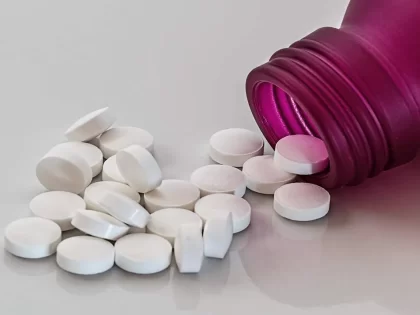Understanding the Significance of 10 Units of Semaglutide

Semaglutide, a revolutionary medication in the realm of diabetes management, has garnered attention for its efficacy in controlling blood sugar levels. Among its various dosages, the use of 10 units of semaglutide has emerged as a crucial therapeutic option in the treatment of diabetes. In this article, we delve into the significance, mechanism, dosage, benefits, and considerations surrounding Semaglutide 10 units.
What is Semaglutide?
Semaglutide 10 units refer to a specific dosage of the medication, which is a glucagon-like peptide-1 (GLP-1) receptor agonist. This formulation is used for the management of type 2 diabetes. When administered as a subcutaneous injection, 10 units of semaglutide activate GLP-1 receptors, stimulating insulin secretion and inhibiting glucagon release. By regulating blood sugar levels, Semaglutide assists in improving glycemic control in adults with type 2 diabetes. It is crucial to follow the prescribed dosage and guidance provided by healthcare professionals for optimal therapeutic outcomes.
Recommended Dosage for Semaglutide 10 units:
The recommended dosage for Semaglutide involves subcutaneous administration as directed by healthcare providers. Typically, the initial dose may be adjusted based on individual patient needs. It is essential to follow the prescribed dosage and administration instructions meticulously to achieve optimal results in managing type 2 diabetes. Healthcare professionals will assess the patient’s response to the treatment and may make adjustments as necessary. Regular monitoring and adherence to the recommended dosage are crucial for effective diabetes management with 10 units of semaglutide.
How Does Semaglutide Work?
Semaglutide 10 units works by activating GLP-1 receptors, exerting its effects on multiple physiological processes. Administered as a subcutaneous injection, it stimulates insulin secretion from pancreatic beta cells while inhibiting glucagon release. This dual action helps regulate blood sugar levels in individuals with type 2 diabetes. Additionally, Semaglutide slows gastric emptying, contributing to stable post-meal glucose levels. The medication’s impact on appetite regulation in the brain leads to a feeling of fullness, supporting weight management. By targeting these key mechanisms, Semaglutide 10 units provide a comprehensive approach to glycemic control and support overall diabetes management.
Benefits of taking Semaglutide:
- Improves blood sugar control effectively.
- Aids in managing type 2 diabetes.
- Stimulates insulin secretion for glucose regulation.
- Inhibits glucagon release to prevent elevated blood sugar.
- Slows gastric emptying for stable post-meal glucose levels.
- Some individuals may experience weight loss as a benefit of using Semaglutide 5 mg, or 10 mg.
- Convenient subcutaneous injection for ease of use.
- May have cardiovascular benefits.
- Offers a comprehensive approach to diabetes care.
- Potential reduction in the risk of major cardiovascular events.
When Should You Take Semaglutide?
You should take Semaglutide 10 units as prescribed by your healthcare provider. Typically, it is administered as a subcutaneous injection at any time of the day, with or without meals. To optimize effectiveness, maintain consistency by taking it at the same time daily. This approach helps establish a routine for better adherence to the prescribed dosing schedule. Always follow the specific guidance provided by your healthcare professional to ensure the medication’s optimal impact on glycemic control in the management of type 2 diabetes.
When Should You Not Take Semaglutide?
Semaglutide 10 units should not be taken in certain situations. Avoid this medication if you are allergic to semaglutide or any of its components. Individuals with a history of medullary thyroid carcinoma (MTC) or a family history of MTC should refrain from using Semaglutide 10 units. Additionally, those with multiple endocrine neoplasia syndrome type 2 (MEN 2) should not use this medication. It is crucial to inform your healthcare provider about your medical history, especially regarding pancreatitis, kidney problems, and gastrointestinal diseases, as these conditions may influence whether Semaglutide 10 units is suitable for you.
What is the Mechanism of Action of Semaglutide
Semaglutide 10 units exerts its mechanism of action by activating GLP-1 receptors. Administered as a subcutaneous injection, it stimulates insulin secretion from pancreatic beta cells while inhibiting the release of glucagon. This dual effect helps regulate blood sugar levels in individuals with type 2 diabetes. Semaglutide at 10 units also slows gastric emptying, contributing to more stable post-meal glucose levels. Additionally, it influences appetite regulation in the brain, promoting a feeling of fullness and aiding in weight management. By targeting these key physiological processes, 10 units of semaglutide provide a comprehensive approach to glycemic control and support overall diabetes management.
Uses of Semaglutide 10 Units
Semaglutide 10 units are utilized for managing type 2 diabetes. The medication, administered through subcutaneous injection, effectively improves blood sugar control by stimulating insulin secretion and inhibiting glucagon release. It supports overall diabetes care by regulating post-meal glucose levels through the slowing of gastric emptying. Additionally, 10 units of semaglutide may aid in weight management by influencing appetite regulation in the brain, promoting a sense of fullness. The comprehensive actions of Semaglutide 10 units make it a valuable tool for individuals with type 2 diabetes, contributing to better glycemic control and potentially supporting weight-related concerns. Always adhere to the prescribed dosage and guidance provided by healthcare professionals for optimal therapeutic outcomes.
Warnings and Precautions for Semaglutide 10 Units
- Monitor for signs of pancreatitis; discontinue if suspected.
- Assess renal function regularly, especially in patients with renal impairment.
- Exercise caution in patients with a history of medullary thyroid carcinoma.
- Watch for gastrointestinal adverse reactions, such as nausea and vomiting.
- Be vigilant for symptoms of hypoglycemia, particularly when combined with insulin.
- Use with caution in patients with a history of cardiovascular disease.
- Monitor heart rate, as semaglutide can cause an increase.
- Rotate injection sites to minimize the risk of injection site reactions.
- Inform patients about the potential risk of thyroid C-cell tumors.
- Exercise caution with immunosuppressant use due to potential immunogenicity.
Future Perspectives
Ongoing research continues to explore the extended applications and potential benefits of Semaglutide beyond diabetes management. The drug’s role in weight loss therapy and its potential applications in other metabolic disorders show promise for future advancements in medical treatment.
- Gastrointestinal effects like nausea, vomiting, diarrhea, and constipation.
- Potential risk of pancreatitis; monitor for persistent abdominal pain.
- Increased heart rate observed in some individuals.
- Injection site reactions, including nodules, redness, and itching.
- Thyroid C-cell tumor risk; caution in patients with thyroid conditions.
- Hypoglycemia, especially when used with insulin or insulin secretagogues.
- Renal impairment may require dosage adjustments; monitor renal function.
- Rare cases of medullary thyroid carcinoma reported in clinical studies.
- Possible immunogenicity; caution with immunosuppressant use.
- Ongoing research to understand potential effects on bone health.
Drug Interactions of Semaglutide
Semaglutide 10 units may interact with certain drugs, necessitating caution and close monitoring. Combining semaglutide with other medications affecting gastrointestinal motility, like oral medications for constipation, may alter the absorption of semaglutide. Concurrent use with insulin or insulin secretagogues may increase the risk of hypoglycemia, requiring careful monitoring of blood sugar levels. Drugs affecting renal function may impact semaglutide’s clearance, necessitating dose adjustments in individuals with renal impairment. Additionally, medications that influence heart rate should be used cautiously due to semaglutide’s potential to increase heart rate. Healthcare providers should be informed of all medications, including over-the-counter and herbal supplements, to assess potential drug interactions and optimize the safety and efficacy of semaglutide treatment. Always consult with healthcare professionals for personalized advice on drug interactions and adjustments.
Storage for Semaglutide
Store 10 units of semaglutide according to labeled instructions to ensure stability and efficacy. Keep the medication in the refrigerator, following the specified temperature requirements. Protect it from light exposure, and avoid freezing to maintain its integrity. Unused pens can be stored in the refrigerator. However, once in use, Semaglutide pens may be kept at room temperature for a limited period. Prevent exposure to high temperatures and extreme conditions. Maintain the medication in its original packaging to shield it from moisture. Always adhere to specific storage instructions provided by healthcare providers or on the product label, and if there are uncertainties, consult healthcare professionals or pharmacists for guidance.
Conclusion
10 units of semaglutide stands as a significant therapeutic option in managing type 2 diabetes. Its mechanism of action, dosage, benefits, and precautions make it a valuable asset in the armamentarium of diabetes medications. However, its use requires careful consideration and monitoring by healthcare professionals to ensure optimal outcomes while minimizing adverse effects.
Semaglutide 10 units represents a milestone in diabetes management, offering hope for improved glycemic control and better overall health for individuals grappling with this chronic condition. As research progresses, the full extent of its potential benefits and applications may continue to unfold, paving the way for more effective treatments in the field of diabetes care.
Frequently Asked Questions (FAQs)
1. Can semaglutide replace insulin in diabetes management?
In some cases, yes. However, individual circumstances vary, and your doctor will determine the most suitable treatment plan.
2. How long does it take for semaglutide to show effects?
Some individuals may notice improvements in blood sugar control and weight within weeks, while others may take longer. Consistency in medication use is essential.
3. Are there dietary restrictions when taking semaglutide?
While there are no strict dietary restrictions, maintaining a healthy diet is beneficial for overall health and improved effectiveness of the medication.
4. What should I do if I miss a dose of semaglutide?
If you forget to take a dose, administer it as soon as you remember, unless it’s close to the time for your next scheduled dose. Do not double the dose to catch up.





